As we look back on films of 2023, a clear highlight was the acclaimed hit Spider-Man: Across the Spider-Verse. At the center of both Spider-Verse movies has been Miles Morales, a character who’s gotten quite the spotlight of late, from the comic books where he originated, to the PlayStation Spider-Man game series — which had its own hit sequel in 2023 — to the Spider-Verse films. We decided to focus specifically on that animated onscreen version of Miles for this psychological profile from clinical psychologist Dr. Drea Letamendi, who examines a young man who’s quickly learning a lot about his place in the world… Well, worlds.
Read on for Dr. Drea’s expert analysis!
Miles Morales is, in many ways, a typical teenager who lives in Brooklyn, New York. He air-drums to the songs he loves, draws in his sketchbook, daydreams – and often gets stuck in his own thoughts. Miles is outgoing, bright, and sociable, but he’s not yet confident in himself. He wants to fit in, but he often feels out of place. He wants to create his own path, and yet receiving approval by others is just as important. With Miles, there’s an unmistakable search to belong, just as he is. He just hasn’t figured out who he is yet.
Miles is raised by his Puerto Rican mother, Rio, and his African-American father, Jefferson. His biracial Latino identity is shaped by his upbringing, his strong connection to both parents, and a household environment that values hard work, honesty, and cultural pride. Miles wears a hi-top fade, Spanglish flows from his tongue with ease, and plátanos fritos are the accustomed dish at his family’s dinner table. In his home, Miles feels affirmed and safe to embrace all the different dimensions of his personhood. But when he becomes Spider-Man, new doubts, insecurities, and dissonance surrounding his identity crawl to the surface.
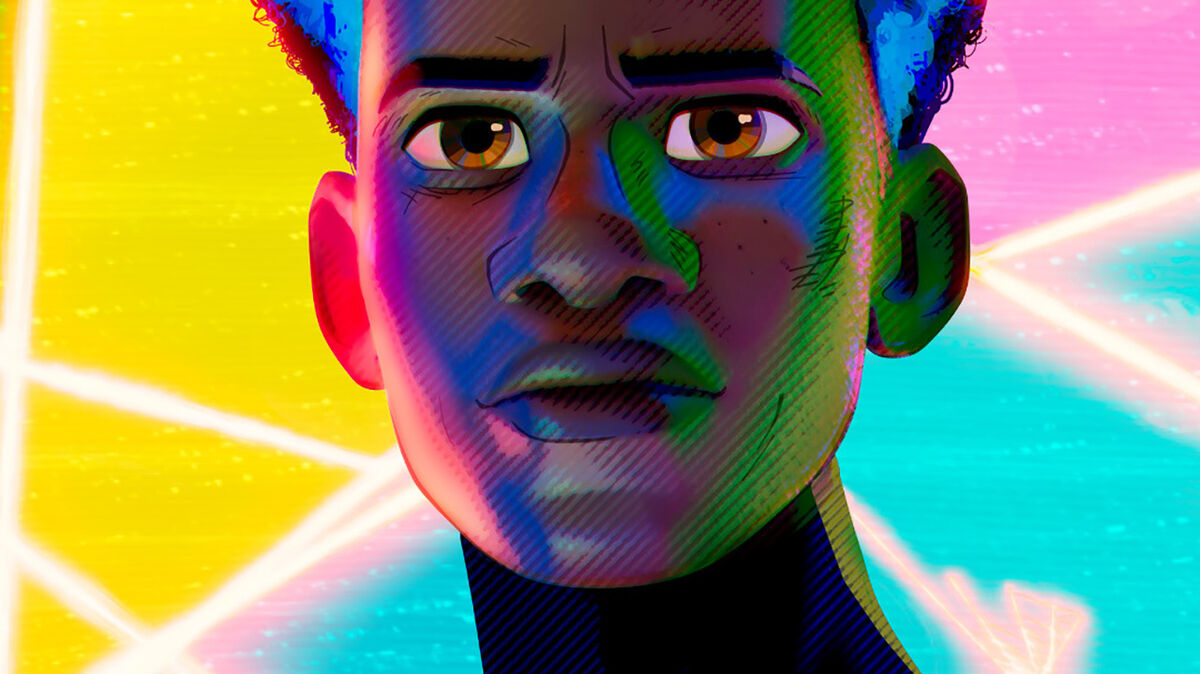
Miles is from Earth-1610, a universe that already had a Spider-Man, Peter Parker. The Spider-Verse is a multiverse of alternate universes, each of which has the potential for its own Spider-Man. Many common features are shared across Spider-People; for instance, nearly all variants are bitten by a radioactive spider and develop similar superpowers. Miles, too, is bitten by a radioactive spider and steps into the role after his universe’s Spider-Man is killed. And nearly all Spider-People will experience the untimely death of a beloved mentor figure. The biological infection triggers alterations in Spider-Man’s body, but it’s the interpersonal, psychologically altering trauma that sparks moral transformation. These experiences are unavoidable, repeatable, unalterable chapters in the Spider Story. Every universe. Every time. Every Spider.
“Everyone keeps telling me how my story is supposed to go. Nah, I’m gonna do my own thing.” – Miles Morales
The shared origin story, across the Spider-Verse, involves a personal commitment to serve the neighborhood as a masked protector, an anonymous guardian, a person split into two selves. As a psychological concept, the Spider-Verse raises questions about how we make sense of our existence in the vastness, the entwined web of fixed universes. What happens to our notions of self-determination, agency, and mattering in the world? Not just any world, but the one we call our home. If Miles’ destiny is already written, if his world dictates what happens to him based on his identity, how can he feel authentic, unique, or even self-empowered? Will the multitude of external pressures make him snap?
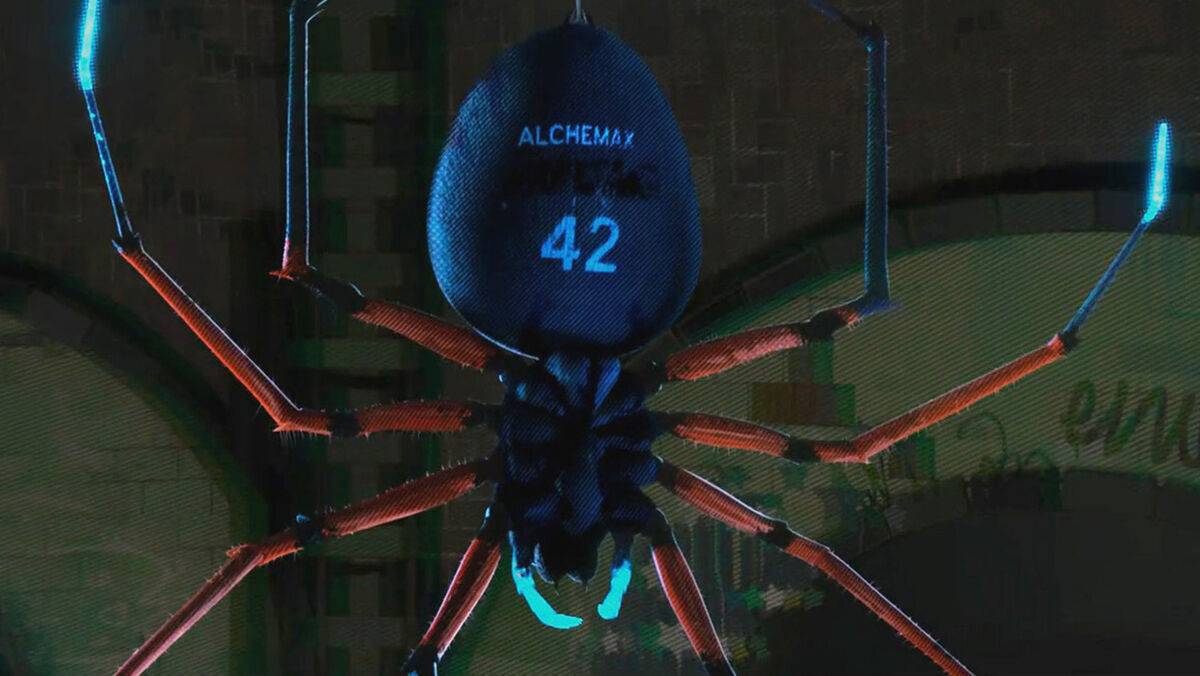
Like other Spider-People, Miles gains his powers after being bitten by a genetically-altered, radioactive spider. But Miles’ spider happens to be a variant from Earth-42, not from his own world. And this bite gives Miles additional abilities that are less common for Spider-Man, such as the power to generate and control electricity, and the ability to become invisible. He is only 14 when he experiences a series of sudden and unfamiliar transformations in his body, including heightened senses, excessive internal temperatures, and exaggerated interoception, which is a focused awareness on internal psychological processes. To Miles, it feels like puberty on steroids.
“Why are all of my thoughts so loud?!” – Miles, after he’s bitten by a radioactive spider
Miles doesn’t feel like himself. And he’s unable to stop or even mask the changes happening inside of him. To make matters worse, he believes that everyone at his new school can also see the strange things happening to his body. He panics. In some ways, the unexpected and unwanted physical distortions are considered traumatic. Trauma isn’t simply an event. Trauma is the interpretation of the event. It’s the emotional response to a distressing situation that steals our sense of security, violates our physical body, or alters our personhood. Pediatric medical trauma holds some resemblance to becoming Spider-Man. When children experience significant pain, injury/mutilation, serious illness, medical procedures, and invasive or frightening treatment experiences, they can develop long-lasting reactions of hyperarousal, avoidance, fear, and panic. Their own body can feel foreign to them.
As Miles begins to adapt to his new body, he learns to integrate changes and sensations, almost like an interconnected web that links his old self and new self. But it does not happen overnight. It involves emotional and mental transformations that coincide with the physical. Becoming a superhero is analogous to traumatic growth; as his body changes, Miles must reckon with new responsibilities, grow into his powers, gain a sense of self-efficacy, and grieve his younger, innocent self.
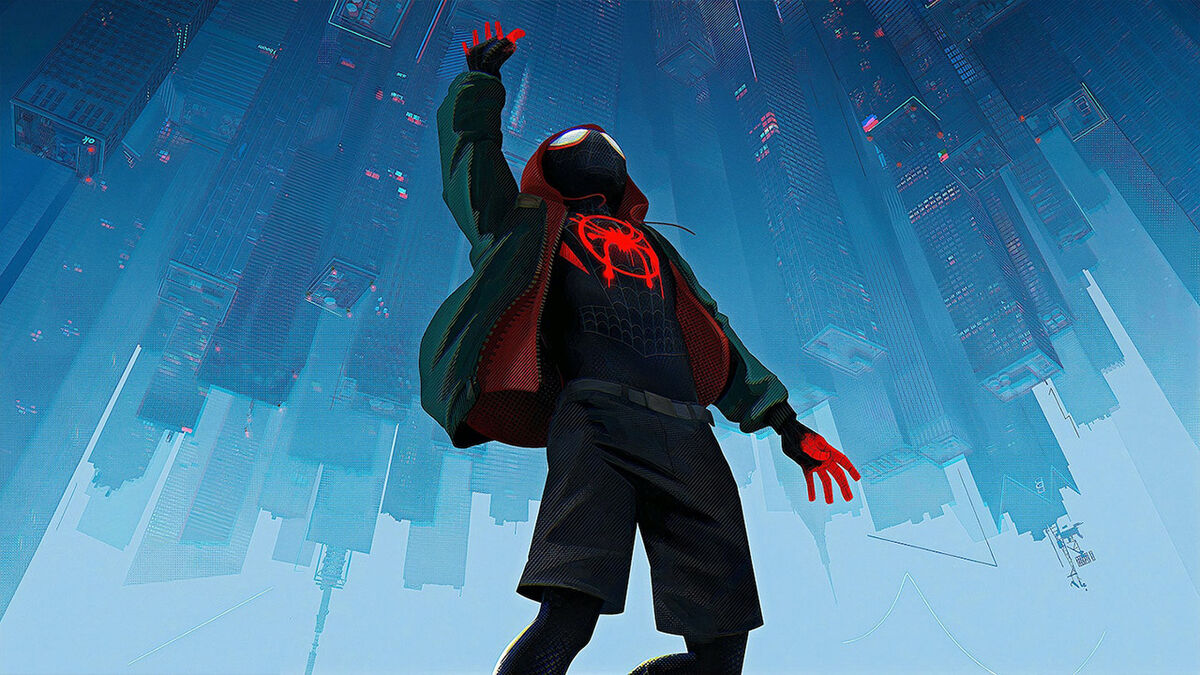
A frequent feature of various versions of Spider-Man is web-slinging. The ability to travel through the city by swinging from rooftop to rooftop is an essential tool for a superhero who fights crime in New York City. When Miles meets Peter B. Parker, the Spider-Man from Earth 616B who ends up in Miles’ universe, he asks endless questions about his readiness to be Spider-Man and what it takes to truly step into the suit of a hero. “How do I know I’m Spider-Man?” Miles asks Peter, both with a sense of eagerness as well as with a defeatist conviction that he might never be as good as the Spider-Man concept he holds in his mind.
Peter B. Parker is first somewhat reluctant to see himself as a worthy mentor, but eventually recognizes the self-doubts and loneliness within Miles. Peter encourages Miles to be patient, to be thoughtful, but most of all, to believe in himself. Miles, in turn, knows he must master web-slinging, but he’s not good at it. In fact, he’s not great at being Spider-Man at all. When he climbs to the top of a high rise, he’s terrified. Leaping off a building feels too risky, unnatural, and it provokes his imposter syndrome—what if he’s not meant to be Spider-Man after all? So, Miles rushes back down the stairwell and locates a much shorter building with a more manageable height to try out his newly emerging abilities.
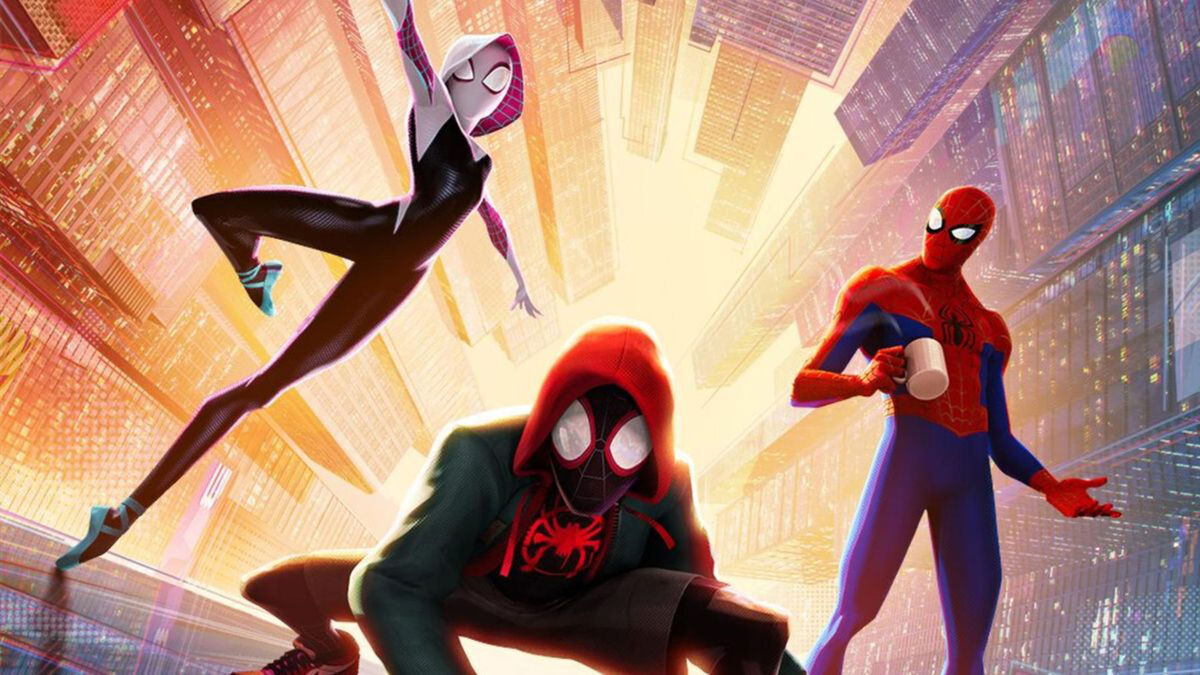
Facing something new, especially if it raises anxieties, self-doubts, and negative thoughts, is an obstacle that can be overcome with behavioral exposure. Exposure therapy is a type of treatment that involves the gradual “exposure” to things, situations, and activities that a person fears and avoids. Most of us, for instance, would feel a sense of unease (if not intense terror) at the prospect of leaping from building to building, supported only by a thin line of synthetic spider silk. Starting small and progressively working up to more challenging goals is an effective way to train our brains and bodies to grow into a new skill. Exposure therapy can help treat several types of distress caused by phobias, post-traumatic stress disorder (PTSD), and panic disorder. Because people with these conditions critically limit their lives to avoid encountering what they fear, taking “a leap of faith” by believing in themselves and their abilities can be healing as well as empowering.
With repeated practice exploring his Spider-Man identity, Miles is able to achieve four psychological goals of exposures: habituation (in which his fear of failure decreases over time), extinction (such that any negative associations with web-slinging dissipates), self-efficacy (Miles realizes he is capable of overcoming a hardship), and emotional processing (he has attached new, more positive beliefs to the activity). While exposure practice seems predominantly action-oriented (and scary!), the emotional transformations are often life-changing. With fortitude and self-conviction, Miles will eventually take on the challenge of that same tall building, overcoming his negative self-talk, diving courageously into the unknown, and finally seeing himself as the hero worthy of his own story.
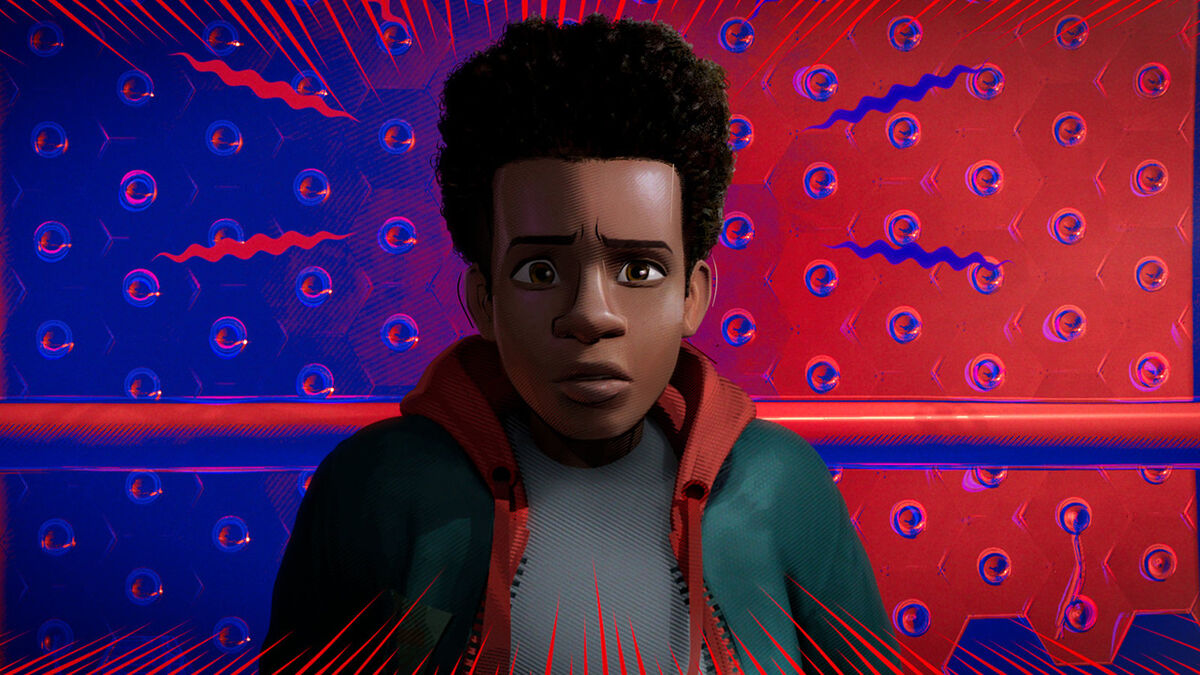
Like other Spider-People, Miles occasionally senses trouble or danger through a sixth sense known as Spider-Sense (or Spidey-Sense). This superpower is based on real spiders and their extra-sensory abilities. Arachnids rely heavily on subtle perceptions through tiny hair and slits all over their body to interpret vibration, smell, and touch. They sense tiny vibrations in their silk-sewn webs, which act as extensions of their sensory systems. These tiny, perithreshold signals send spiders detailed information about anything that encounters their web, especially the presence of potential predators.
Spider-Sense is an extra-sensory, psychological superpower, one that gives Spider-Man an acute awareness of his surroundings, as well as an intuitive sensation that something is wrong, dangerous, or suspicious. It allows Spider-Man to detect danger before it happens –and the greater the danger or how close the danger is increases the tingling sensation in his body. When Miles fights The Spot, a supervillain who can open and travel through interdimensional portals, he uses his Spider-Sense to figure out which portal would allow him to intercept and neutralize his enemy. This ability also allows Spider-People to sense one another (like real spiders). Miles can sense the mere physical presence of Earth-65B‘s Gwen Stacy, Peter B. Parker, and members of the Spider Society from different universes.
The Spider-Sense is a fictional magnification of an actual human sense. We’ve all had unexplained moments when a “gut feeling,” whether good or bad, affects our judgment of a situation. While we often dismiss it as superstitious, this Spidey-Sense may be scientifically provable. Researchers liken it to an ability of intuition, and it has two components. It is swift (like when we approach a situation and immediately think “I have a bad feeling about this”) and it’s physical (like when we feel tiny sensations all over our skin or in the pit of our stomach). This is because intuitive judgements may make their way, subliminally, to our brain. Intuition is probably connected to a biological process called interoception, which involves bottom-up processing, starting with activity in the amygdala and other limbic areas, which are considered the ancient, instantaneous flight-or-fight system of our brains. Those signals then travel back to our organs, extremities, and tiny muscles in our skin that raise our body hair (goose bumps). It’s no coincidence that another name for intuition is “gut feeling” – we instantly feel sick, tingly, intensely hot, or suddenly cold. Our heart rate rises, we start to sweat, or our vision goes a little blurry.
Real life examples of Spidey-Sense can be helpful because we’re better able to navigate our surroundings when we’re attuned to the way our bodies feel and react; we listen to the way our bodies send us signals or let us know when it feels unsafe. Though interoception is not frequently considered one of the 5 core senses, it should be included when youth are learning about their sensory systems. For kids with sensory processing issues, they may not be able to readily notice when they’re feeling pain or discomfort, or when their bladder is full. Kids who struggle with the interoceptive sense can also have trouble “feeling” their emotions; they’re less likely to tune into physical cues that help interpret emotion. For instance, Miles may not “feel” fear if he’s not able to recognize that his muscles are tense, his breathing is shallow, or his heart is racing. Teaching youngsters to be more open to their bodily sensations including tactile, muscular-skeletal, visceral, and emotional, will be helpful when they need to find safety.
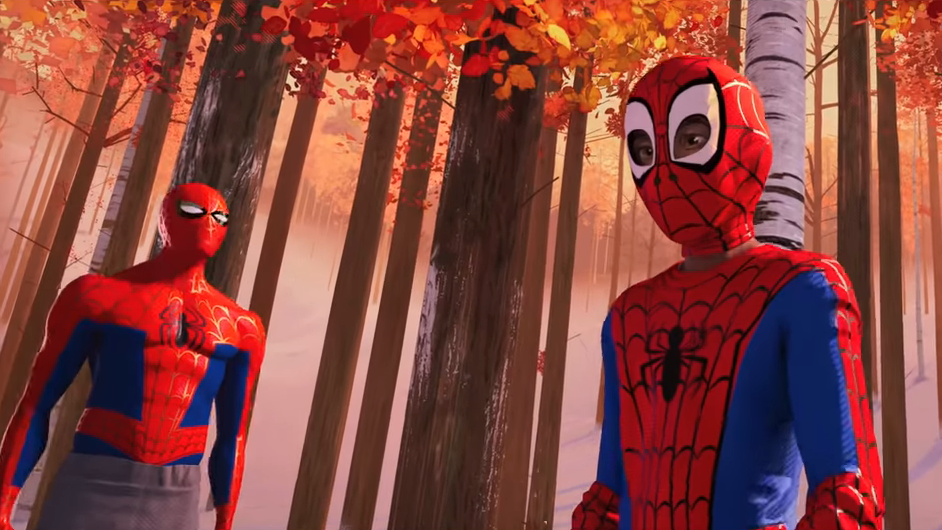
Once Miles finds out that he’s got Spider-Man’s powers, he buys a store-bought bargain Spider-Man suit from a local shop. The costume is ill-fitting and unconvincing, but it gives him the opportunity to explore and experiment with his new identity. The Spider-Man mask is also representative of new features of his life he’ll need to navigate: hiding his superhero persona from his parents, portraying himself as tough in the streets, and also emitting a positive disposition so that people know he’s “the good guy.” Wearing the suit comes with an array of new pressures not unlike the struggle Miles experiences to balance who he feels he is on the inside, and how the world sees him.
Young men often are not taught how to cope with their feelings. Despite a growing public awareness of mental health, stigma remains. Boys (and men) still feel pressured to put on a brave face when they are hurt, to mask their emotions, and to face challenges alone without asking for help. As Miles adjusts to his new role as Spider-Man, he begins to master wall-crawling, web-slinging, invisibility, and even captures local criminals. He takes on new responsibilities, pressures, and expectations, but doesn’t have the tools to deal with the emotional toll of the superhero identity. Inevitably, signs of psychological burnout emerge—Miles is forgetful, easily frustrated, and late to important events such as his academic counseling meeting. He has difficulties regulating the ups and downs of his moods, swinging from excitement to disappointment to despondency.
“I’m tired of letting everybody down.” – Miles Morales
When both Miles and his father chase The Spot to a construction site, they share a rare moment of vulnerability together. With the Spider-Man mask as a protective barrier, Miles lets his guard down and speaks to his father with sincerity. Not knowing it is his own son, Jeff also brings his wall down and expresses that he, too, as a dedicated policeman, is fatigued and helpless in his position, that he has self-doubts about his parenting, that he feels an ongoing pressure to give his boy a better life than he had. They both talk openly about feeling overwhelmed, stressed with their growing responsibilities, and uncertain about the future. Miles realizes that he is more like his father than he once thought, and both men feel a sense of emotional affirmation they aren’t receiving from the world they’re in.
Wearing a mask, cowl, helmet, or anything that covers one’s face can lead to the psychological phenomenon called deindividuation. Deindividuation happens when there is loss of a person’s individuality and personal responsibility in social situations. Classic studies in psychology show that deindividuation can lead to anti-social behaviors such as participating in mob violence. Anonymity removes accountability and breeds recklessness, rebellion, and rule-breaking. Yet, mask wearing doesn’t always result in antisocial behavior. Deindividuation can sometimes lead to prosocial behaviors such as donating to charity or helping others in need. Furthermore, when people wear masks that align with their own values, positive qualities may be enhanced. For instance, studies that explore cosplay have found that people tend to feel even more authentic in superhero costumes; cosplay acts as an enhancer of existing qualities such as bravery and goodwill. Every time Miles wears the Spider-Man mask, he channels the courage, tenacity, and sharpness of others that came before him.
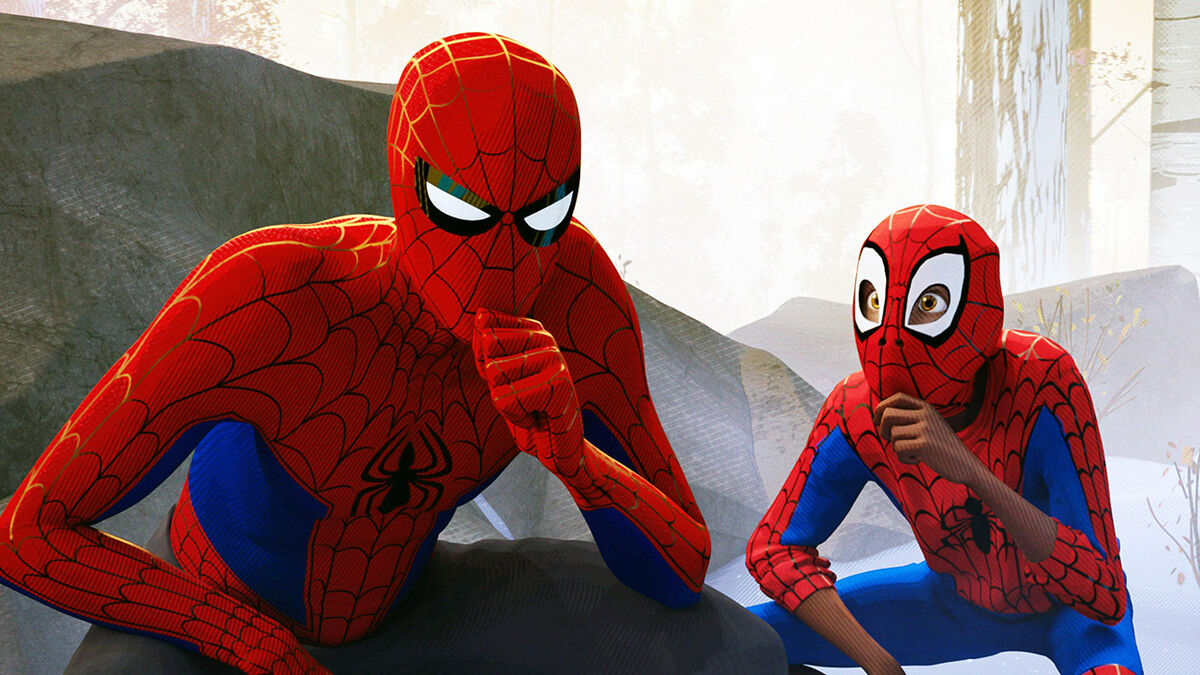
But Miles isn’t exactly like his mentor, Peter Parker. Miles struggles with how to feel, understand, and express his emotions. His unique superpower of invisibility—the erasure of the self—seems an extension of his emotional experience of his world. Stressors such as urban violence, police brutality, and stereotype threat play a part in shaping, and limiting, how young men of color carry themselves. Specifically, Black and Brown young men are taught to control and suppress their emotions as a protective strategy. In the U.S., personality stereotypes that formed during slavery persist, in that boys of color continue to be assigned the label of laziness, as well as the characteristics of submissiveness, backwardness, lewdness, treachery, and dishonesty as they mature. Because of these caricatures, showing emotional vulnerability can feel risky and self-betraying. When Uncle Aaron is tragically killed right in front of Miles, his world is shattered and he suddenly has to deal with intense consequences that force him to grow up fast. Alone in his room, Miles lets out screams of rage, releasing his helplessness and grief in secret.
“Being Black in America is learning how not to doubt yourself because when you’re born, everyone else already does.” — Poet Prentice Powell
A full range of emotional expression is not only healthy to have but liberating to exercise. When Miles faces the indignities of loneliness, victimization, and helplessness, he has the right to feel angry. While often perceived as a negative emotion, anger can also be a powerful motivator toward achieving challenging goals. Psychologists suggest that people tend to focus too much on pursuing happiness, that only positive emotions are the path toward good mental health and well-being—but a mix of emotions, including negative feelings such as indignation, frustration, dejection, for instance, can result in the more meaningful and better outcomes when it comes to emotional resilience. According to the functional theory of emotional development, all emotions are reactions to events within a person’s environment and serve the purpose of alerting that person to important situations that require actions. Each emotion may call for a different response; sadness may indicate someone needs to seek support, wheareas anger may suggest they need to take action to overcome an obstacle or improve an oppressive situation.
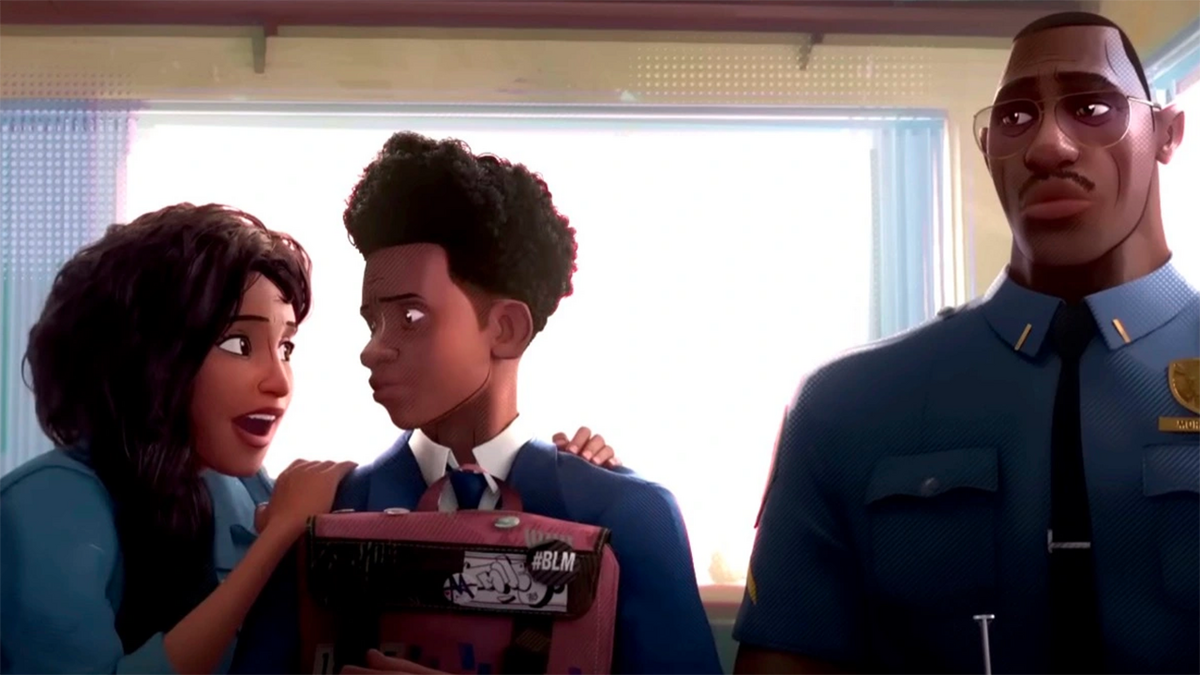
Miles Morales is an African-American Latino, and the roots of these two cultures are actualized, visible, and inseparable to his everyday experience to create a blended, multi-dimensional experience. So, yes, Miles is biracial, but his experience is not simply the existence of two different or separate cultures. He’s not two halves of anything; he’s one whole of an integrated experience. Biracial people are “both and neither” of their heritages, which leads to an interesting and unique lens in identity. Because we live in a monoracial society, biracial youth are met with a constant struggle to self-identify as one category—an impossible ask—which consequently creates a sense of not belonging, as they are not just one race, but exist in the liminal space between two. For many biracial youths, they are left to feel confused, uncertain, and out of place. It was only about 20 years ago that the U.S. Census finally included an option to identify as more than one race, a recognition that validated the existence of nearly 9 million people (and now, 33.8 million people) who identity as mixed race.
The complexity of being biracial in a society which labels us as one race can have its effects on any individual, but especially children. Biracial children are more prone to racism, social problems, psychological struggles, loneliness, low self-esteem, ambiguity, disapproval/rejection, and guilt with siding with one parent’s race over the others. Biracial children often struggle to navigate a “dual minority” status. They find themselves being a minority twice over, both in the larger society as well as within their own minority group or even their family. Given that both his parents identify monoracially, Miles may believe that his own family doesn’t understand what it is like for him. Neither of his parents know what it is like to navigate the complex blending of heritage, language, and cultural values that make Miles who he is. Miles feels like he lets down his mestizo Puerto Rican mother for not being fluent in Spanish (Rio is disappointed to learn he’s earning a B in Spanish class). Miles chooses to spend time with his Uncle Aaron over his own father, because of a sense of relatability he has to his uncle’s Black identity, his uncle’s embrace of Black culture, but most of all, his uncle’s acceptance of Miles just how he is. Miles doesn’t perceive his father, a cop, as a safe outlet for him to explore social rejection and rebellion.
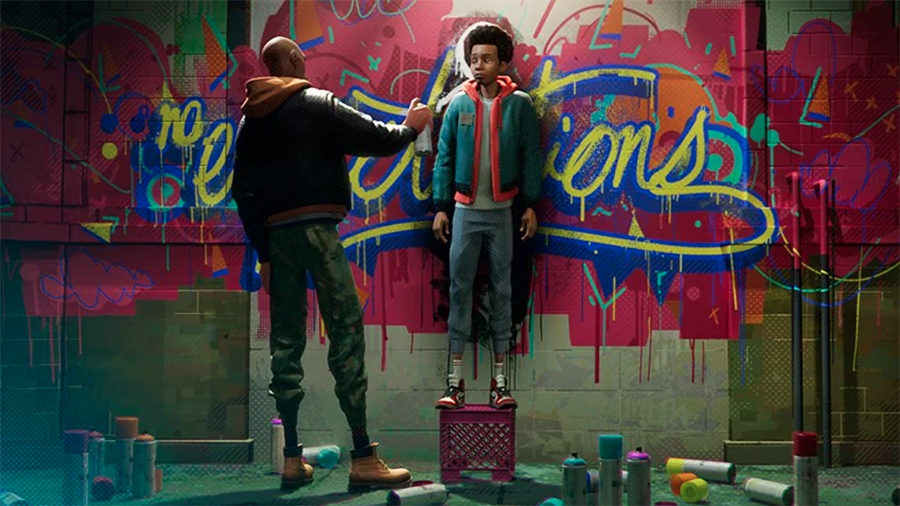
When Miles gets a school assignment to “write a personal essay on himself and what kind of person he wants to be,” he leaves the page blank. Instead, he spends that evening with his Uncle Aaron, bonding over stories, and creating graffiti art. For those who create it, graffiti is an expression of identity and an outlet for creativity, social connection, and achievement, usually in abandoned spaces that the city doesn’t invest in. Graffiti, street art, and sticker art allow Black and Latino young men to transform these areas into spaces of congregation and empowerment. Miles learns from his uncle that art is their voice and visibility in a system against them. Putting his art up around the city is a way for him to achieve respect from his peers, which doesn’t come easily from other places and institutions in society. Miles uses artistic expression to work through his difficult emotions, and to make sense of himself. Deep in the belly of subway tunnels, Miles paints his world to be colorful, lively, and borderless, and he depicts himself in the center of this world, a blank, shadowy figure in the shape of his body, which can simultaneously be seen as a projection of emptiness, or one of limitless possibilities.
“You’re the best of all of us, Miles… You’re on your way, just keep going.” – Uncle Aaron
Family has the largest fundamental impact on the individual and their identity, and it is viewed as the primary institution responsible for answering questions about racial identity. Racially minoritized parents are more likely to be color conscious and to discuss race with their kids at early ages. Caregivers may take on labels to help their children form identity, and protect them from confusion, racial discrimination, or social stigma. Strong, supportive relationships in the household foster a healthy identity for multicultural or mixed kids. Miles is shown affection, comfort, and encouragement by his parents, who want him to have a better life than they had. Blackness and Latinidad are named and celebrated in the Davis-Morales home, but there is no promise that the same love will take place in the bigger world. When it’s clear that Miles has reached a point of maturity, his mother takes a moment to remind him that she has his back, no matter what.
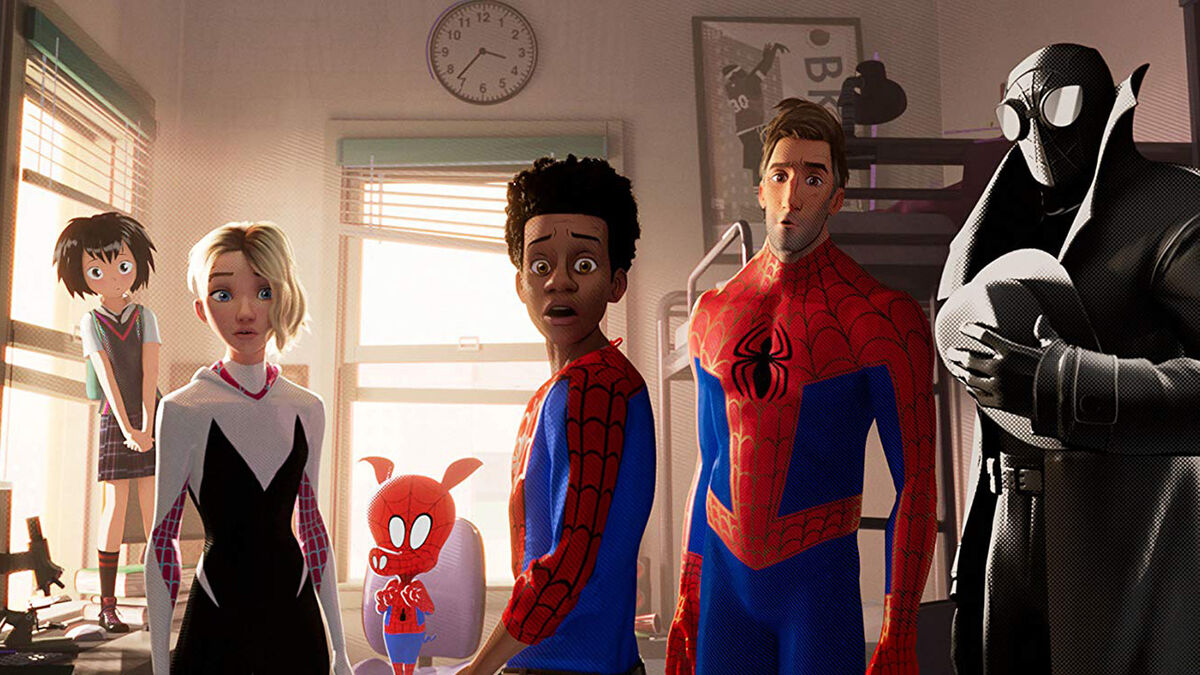
Like most teens, Miles looks for what is unique about himself while also feeling the need to fit in. Biracial children must negotiate their race and often experience the chameleon effect. The chameleon effect is when individuals feel socially pressured to blend into racial groups without standing out or appearing to be different than those around them. Research shows that biracial kids who are raised in diverse neighborhoods, and who attend schools with diverse populations, tend to develop a healthy self-confidence and racial identity. Miles shows a preference, for instance, for his old school in his own neighborhood in Brooklyn, not the Visions Academy Middle, a prestigious, private middle school across town. The backgrounds of his new classmates seem different than his own, and though Miles makes attempts at making friends and greeting his peers, they seem to see right through him.
“Wherever you go from here, you have to promise to take care of that little boy for me…make sure he never forgets where he came from. And he never doubts that he’s loved. And he never lets anyone tell him he doesn’t belong.” – Rio to Miles
The Spider-Gang, a group of six versions of Spider-People with similar powers from different alternate dimensions, introduces a new aspect of belongingness to Miles. Finally! It’s a boost of affirmation he’s been yearning for. All of the strange sensations and hardships associated with becoming Spider-Man are shared by his new peer group. Then, Earth-928B, the futuristic headquarters of the much larger Spider Society, gives Miles a powerful illustration of a shared identity struggle—all are Spider-People, but each has a special set of qualities that make them stand out. At some point, the endearing quirks of the Spider Society wear off, and the sea of red-and-blue suits becomes absurd and suffocating. Even among the people who are most like him, Miles must think for himself. He battles identity loneliness not by finding others exactly like him, but by embracing the idea that what makes him different gives him strength.
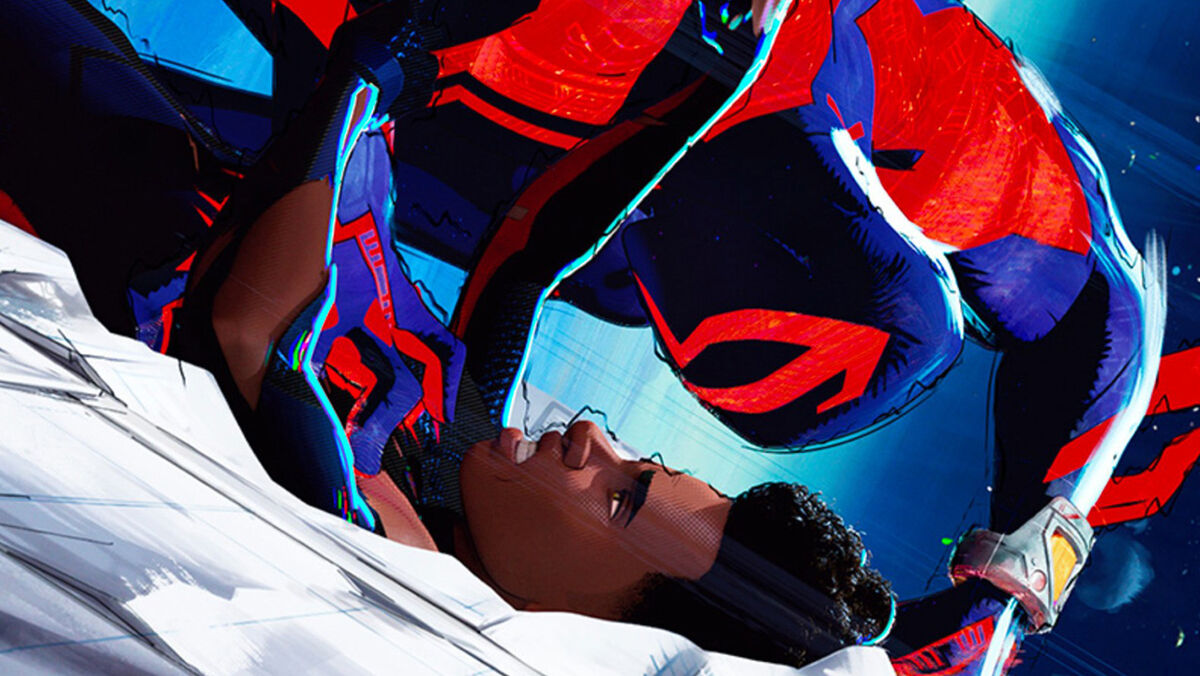
Miles is constantly told that he does not belong, or that he’s in the wrong universe, or that he’s not meant to be Spider-Man. After he causes what is known as a “canon event disruption” by teaming up with Pavitr Prabhakarin, the Spider-Man in Earth-50101’s Mumbattan, Miles upsets the Spider Society, and their leader, Miguel O’Hara. A canon disruption is when a Spider variant alters a predetermined event—even if it means saving lives. To Miles, he simply did the right thing by following his instincts to save the father of Pavitr’s girlfriend, Gayatri, Police Inspector Singh. He is lectured by O’Hara about the dangerousness of anomalies, the potential that he’s destroyed the ecosystem of the multiverse, and that by breaking core multiverse rules, Miles does not deserve to be a part of the Spider Society. Miles feels the familiar sting of being told he’s out of place. The wound deepens when he learns that once his father becomes Captain of the police force, canon dictates that he will be murdered just like all the other Captains in the Spider-Verse.
“I saw all these amazing places and met all these amazing people, but they didn’t want me. I kept thinking about what you said. I didn’t let them have it, mom. I beat them all. I know how strong I am now. I’m strong because of you, and dad, and us.” – Miles Morales
After Miles outwits and escapes the clutches of the Spider Society, he travels back home so that he can save his dad’s life. His time as Spider-Man fuels his resolve. He’s outmaneuvered a mob of Spider-People and their leader. He’s outsmarted Kingpin, the murderer of his Uncle Aaron. He’s earned the trust of Peter B. Parker, Aunt May, and Gwen Stacy. Miles knows he is capable, resilient, and deserving of being Spider-Man. His way. Feeling more determined than ever to be instrumental in his own story, Miles decides to come clean to his mother. He’s ready to stop running from it. He’s more present than ever, confident in his choices, proud that he chose people over algorithms, fairness over destiny, kindness over compliance. I’m gonna do my own thing. When he gets to his bedroom, Miles finally opens up to his mother about his struggles with everything—his loneliness, his secrets, his losses, his anger. Being real with his mother is a leap of faith. “I know you know I’ve been lying to you,” he tells Rio. “It’s because I thought, if you knew, you wouldn’t love me the same. Now I’m not afraid of anything.”
“Mom, I’m Spider-Man.” – Miles Morales
Rio is clueless. Who is Spider-Man? ¿Qué? To his horror, Miles realizes he’s not in his actual home but in his variant’s home, on Earth-42, the dimension of the spider that initially bit him. The transporter back at Spider headquarters must have read his spider’s DNA, linking Miles to the wrong universe. He is lost. Out of place. Again.
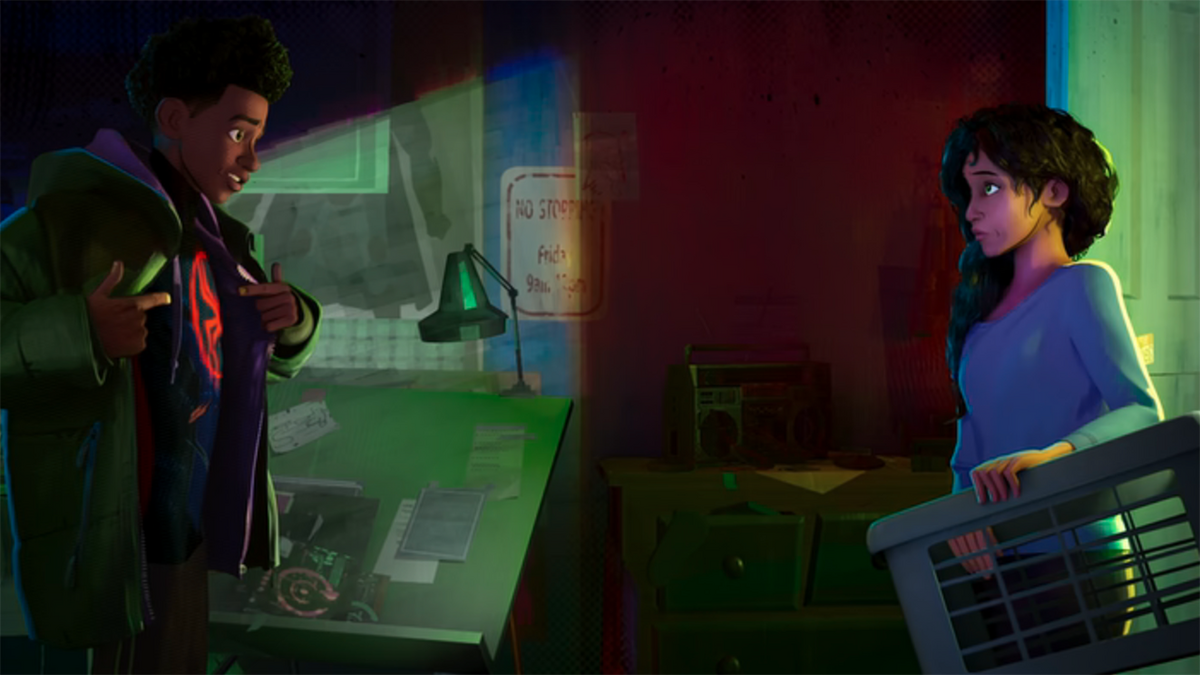
With so many stories of Spider-Man on screen, it’s natural to box Miles in as just another gifted youngster who finds an outlet for his ambition as a friendly neighborhood crimefighter. But Miles isn’t an imitation of Peter Parker. Miles’ Spider-Man is for those of us who have carried the burdens of other people’s expectations, who have tried but failed to fit in the shoes of our heroes, and who have realized that “great responsibility” isn’t always on our terms.
As his uncle asserted, Miles is the best of us by showing that imperfection, vulnerability, and in-betweenness are actually superpowers. He can see beyond borders, transcend frontiers, and foresee possibilities that do not have to be fixed or forged by other people, even when we look up to those people. In a multiverse that demands we can only belong in one place, Miles thrives in the liminal spaces between cultures, between childhood and adulthood, and between destiny and self-determination.
Related